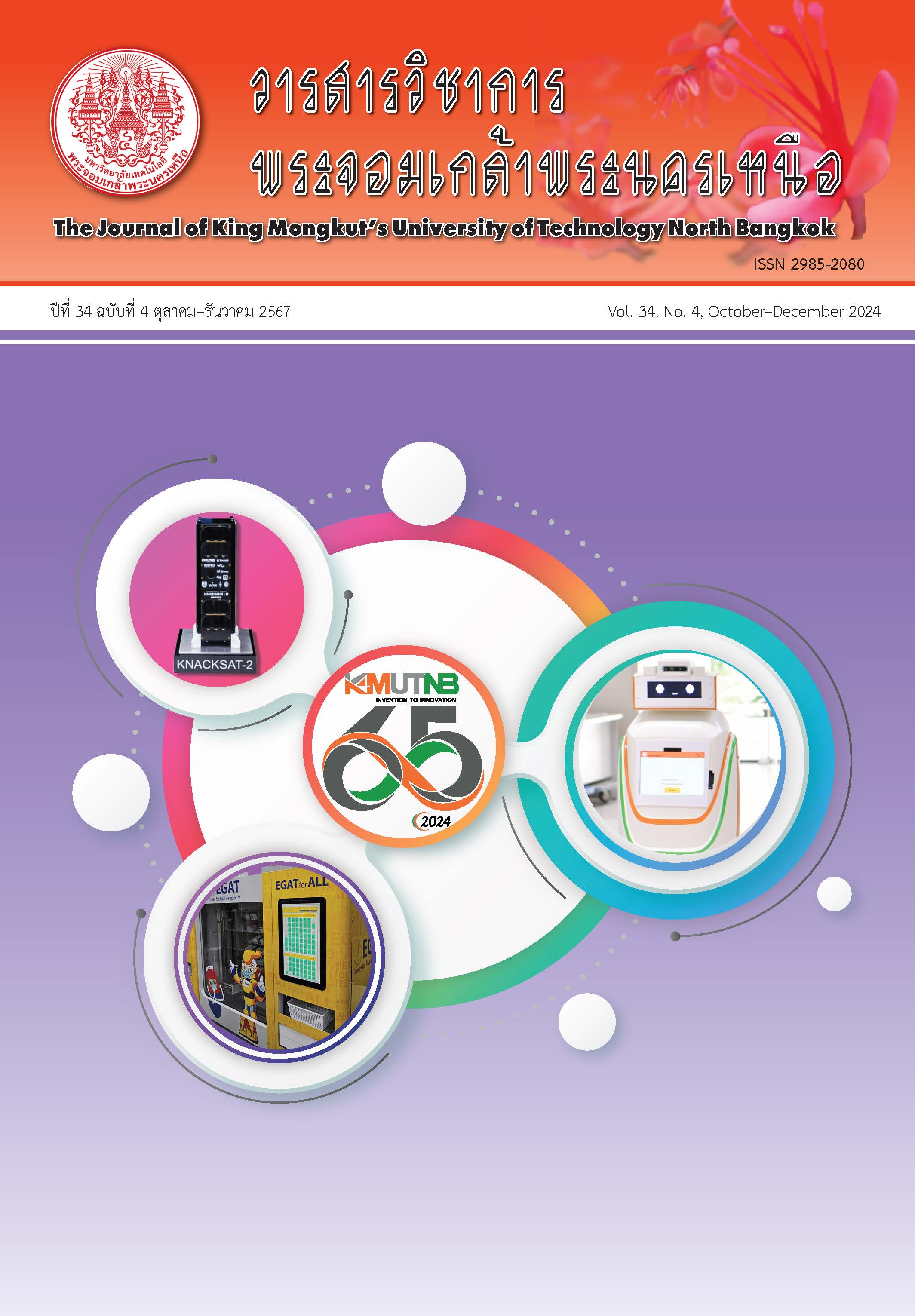Improvement of Space Planning Skills Using Immersive Virtual Reality
Main Article Content
Abstract
The objectives of this research are 1) to synthesize the conceptual framework of the improvement of space planning skills using immersive virtual reality; and 2) to study the learning outcome of the improvement of space planning skills using immersive virtual reality. The tools used in this research are 1) the immersive virtual reality for dynamic real time visualizations in the condominium environment; and 2) the space planning skills evaluation forms with Scoring Rubrics. The experimental group of this research is the Architecture and Interior Design students, with 10 students as the sample group. the conceptual framework for improvement of space planning skills using immersive virtual reality for the learning process consists of 1) survey and evaluation of the interior; 2) furniture examination; 3) furniture arrangement; and 4) creating perspective for presentation. The finding of this research is that the students’ space planning skills after using the immersive virtual reality for dynamic real time visualizations is at the very good level (74.28%) with 6 students. The students could improve their space planning skills with a well-balanced distance between each furniture, and could arrange the furniture corresponding to the room’s size. The improvement of space planning skills using immersive virtual reality can reduce the problem about understanding the environment, and can reduce the physical limit when the simulation of real space is not available. The research also found that the use of virtual reality is an appropriate method to help the first-years students to get the foundation idea of space planning.
Article Details

This work is licensed under a Creative Commons Attribution-NonCommercial-NoDerivatives 4.0 International License.
The articles published are the opinion of the author only. The author is responsible for any legal consequences. That may arise from that article.
References
A. Indraprastha and M. Shinozaki, “The investigation on using unity3D game engine in urban design study” ITB Journal of Information and Communication Technology, vol. 3, no. 1, pp 1–18, 2009.
Y. Lin, C. Pan, and J. Kuo, “Multiuser interior design over the internet” in Proceedings of the 37th Conference on Winter Simulation, 2006, pp. 569–575.
M. Mihelj, D. Novak, and S. Beguš, Virtual Reality Technology and Applications. Intelligent Systems, Control and Automation: Science and Engineering 68, Springer Science and Business Media Dordrecht, 2014.
K. Prit, M. Archana, and H. Ben, “Design implications for adaptive augmented reality based interactive learning environment for improved concept comprehension in engineering paradigms,” Interactive Learning Environments, vol. 30, no. 4, pp. 589–607, 2019.
Y. Liu, F. Castronovo, J. Messner, and R. Leicht, “Evaluating the impact of virtual reality on design review meetings,” Journal of Computing in Civil Engineering, vol. 34, no. 1, pp. 1–13, 2020.
H. C. Gomez-Tone, M. A. Chávez, L. V. Samalvides, and J. M.-Gutierrez, “Introducing immersive virtual reality in the initial phases of the design process—Case Study: Freshmen designing ephemeral architecture,” Buildings, vol. 12, no. 5, pp. 518, 2022.
R. Yan, A. Masood, P. Li, S. G. Ali, B. Sheng, and J. Ren, “3D simulation of interior house design in VR using VR3ID method,” presented at the 2018 IEEE International Conference on Progress in Informatics and Computing (PIC), Suzhou, China, 2018.
M. Merleau-Ponty, D. Landes, T. Carman and C. Lefort, Phenomenology of perception. Routledge, 2012. [9] R. J. Teather and W. Stuerzlinger, “Pointing at 3D targets in a stereo head-tracked virtual environment,” in 2011 IEEE Symposium on 3D User Interfaces (3DUI), 2011, pp. 87–94.

